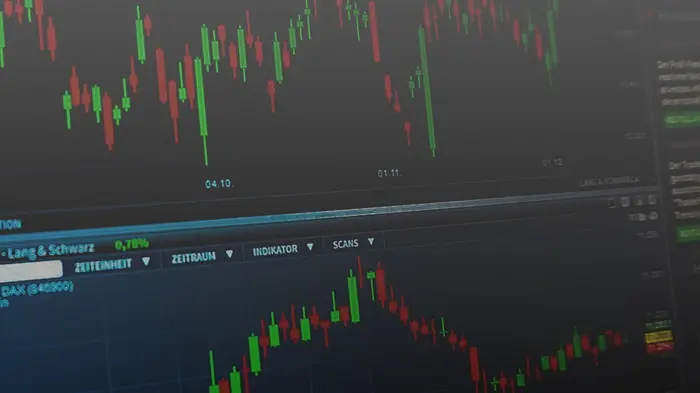Bali, a tropical paradise nestled in the Indonesian archipelago, has become a top destination for travelers from all corners of the globe. With its mesmerizing beaches, rich cultural heritage, lush landscapes, and warm hospitality, it offers a plethora of experiences that can make for an unforgettable vacation. However, to ensure a smooth and enjoyable trip, it’s essential to plan your finances carefully. One of the most common questions among those planning a visit to Bali is, “How much USD should I bring?” The answer isn’t straightforward, as it depends on multiple aspects of your travel plans. In this article, we’ll break down these factors to help you make a well-informed decision about the amount of US Dollars you should take with you on your Bali adventure.
Understanding the Currency Situation in Bali
The currency used in Bali, as throughout Indonesia, is the Indonesian Rupiah (IDR). While Bali is quite tourist-friendly and many places, especially in popular tourist areas, do accept credit cards, there are still numerous occasions when having cash in hand is a must. Small local shops, street food vendors, traditional markets, and some local transportation services often rely solely on cash transactions. So, you’ll need to convert some of your USD into Rupiah to cover these expenses during your stay.
Factors to Consider When Deciding How Much USD to Bring
1. Length of Stay
The length of your time in Bali is a primary factor influencing the amount of money you’ll need. If you’re planning a short trip, say just a long weekend of two or three days, your expenses will be relatively contained. You’ll mainly need funds for meals at local eateries, short trips around the immediate area using local transport, and perhaps a few small purchases like souvenirs or snacks. For such a brief visit, you might be able to manage with around $100 to $200 worth of converted Rupiah.
On the other hand, if you’re looking at a week-long stay, your financial needs will increase significantly. You’ll have more meals to pay for, might take day trips to different parts of the island, and will likely want to explore a variety of attractions. In this case, you could consider bringing between $500 and $800 worth of USD to convert. For an extended stay of two weeks or more, you’ll have even more costs to cover. There will be additional dining expenses, more transportation for exploring different regions, and potentially more shopping. For a two-week trip, you might want to bring around $1000 to $2000 worth of USD to ensure you have enough money for a comfortable and enjoyable experience.
2. Accommodation Choices
Your choice of accommodation can greatly affect how much cash you’ll need. Luxury hotels and resorts in Bali usually offer a wide range of services and allow you to charge most of your expenses, such as room charges, meals at their restaurants, and additional amenities like spa treatments, to your credit card. However, you’ll still likely need some cash for tipping the staff, as tipping is a common practice in Bali. Also, there might be small purchases within the hotel premises, like buying a snack from a vending machine or paying for a local handicraft from a hotel boutique, that may require cash.
In contrast, if you opt for budget accommodations like hostels, homestays, or small guesthouses, the payment situation can be different. Some of these places may require you to pay for your stay in cash upfront. You may also need to pay extra for things like additional towels, use of a fan or air conditioner if it’s not included in the base price, or for drinking water. If you’re staying in budget accommodations throughout your trip, you’ll need to factor in a significant amount of cash for these types of expenses compared to staying in luxury hotels.
3. Food and Dining Habits
Bali has a diverse and exciting food scene that caters to all budgets. At one end of the spectrum, you have local warungs, which are small family-run restaurants. These are great places to sample authentic Indonesian cuisine at very affordable prices. You can get a plate of delicious nasi campur (a mixed rice dish with various toppings) or sate lilit (minced meat satay) for as little as 15,000 to 30,000 IDR, which is roughly equivalent to $1 to $2 in USD. Street food is also plentiful and inexpensive, with items like martabak (a sweet or savory stuffed pancake) or bubur ayam (chicken porridge) costing just a few thousand IDR each.
However, if you prefer dining in nicer restaurants, especially those in trendy areas like Seminyak or at beachfront locations, the prices can be quite a bit higher. A meal at a mid-range restaurant could cost around 80,000 to 150,000 IDR ($5 to $10), and at high-end places, you might spend 300,000 IDR ($20) or more per person. If you plan to have a mix of casual and upscale dining experiences during your stay, you should budget accordingly. On average, for a daily food budget, if you aim for a combination of local warung meals and some nicer restaurant outings, you might plan to spend around 200,000 to 400,000 IDR ($13 to $26) per day. This means you’ll need to set aside the appropriate amount of USD to convert based on your expected length of stay.
4. Transportation Options
Getting around Bali offers several choices, each with its own cost implications. Taxis are readily available in most tourist areas, and the most reliable ones are often the Blue Bird Taxis, which use meters. A short taxi ride within a town or to a nearby beach might cost around 30,000 to 60,000 IDR ($2 to $4). For longer distances, such as traveling from one major town to another, the cost can add up.
Renting a scooter is a popular and cost-effective way to explore the island. You can usually rent a scooter for about 50,000 to 80,000 IDR ($3 to $5) per day, plus the cost of fuel, which is relatively inexpensive. Another option is using ride-hailing apps like Gojek or Grab, which are convenient for shorter trips and often have fixed prices based on distance. If you plan to visit different parts of the island regularly or take day trips, you’ll need to budget for these transportation expenses. For example, if you want to explore multiple beaches or go to attractions in different regions, you might need to allocate around 150,000 to 300,000 IDR ($10 to $20) per day for transportation, depending on your itinerary.
5. Shopping and Souvenir Purchases
Bali is a shopper’s haven, filled with a wide variety of items to buy. From beautiful handcrafted souvenirs like traditional Balinese masks, batik fabrics, and hand-carved wooden statues to modern clothing, jewelry, and beachwear. Local markets, such as the Ubud Market, are full of stalls selling affordable souvenirs. You can find small trinkets for just a few thousand IDR, but if you’re looking for higher-quality handicrafts or larger items, prices can range from 50,000 IDR ($3) to several million IDR for more elaborate pieces.
In shopping areas like Kuta and Seminyak, there are numerous boutiques with trendy and often pricier items. If you plan to do a fair amount of shopping, whether for gifts or personal items, you’ll need to have enough funds available. Depending on your shopping intentions, you might set aside anywhere from $100 to $500 or more in USD to convert for shopping purposes during your trip.
6. Activities and Attractions
There are countless activities and attractions to enjoy in Bali. Entrance fees to popular tourist spots like the Tanah Lot Temple or the Ubud Monkey Forest are relatively inexpensive, usually costing around 10,000 to 20,000 IDR ($0.65 to $1.30). However, if you’re interested in adventure activities like surfing lessons, which can cost around 200,000 to 400,000 IDR ($13 to $26) per session, or scuba diving, which may set you back 600,000 to 1,000,000 IDR ($40 to $65) for a dive package, you’ll need to budget for these accordingly.
Cultural experiences like attending a traditional Balinese dance performance or taking a cooking class can also have associated fees. These activities typically range from 80,000 to 150,000 IDR ($5 to $10) each. Depending on how many of these activities you plan to engage in, you’ll need to factor in the associated costs when determining how much USD to bring.
Converting USD to IDR
Once you’ve estimated the amount of money you’ll need in Indonesian Rupiah, you’ll need to consider how to convert your USD. You can exchange currency at banks, official exchange kiosks in tourist areas, or some larger hotels. Banks generally offer more reliable exchange rates, but they may have limited operating hours and require more paperwork. Exchange kiosks in tourist areas are convenient but might offer slightly less favorable rates due to their location and the higher costs associated with running a business in a touristy spot.
Another option is to use ATMs to withdraw Rupiah. Many ATMs in Bali accept international debit and credit cards. However, there may be fees associated with these withdrawals, both from your home bank and from the local bank where the ATM is located. It’s advisable to check with your bank before your trip to understand these fees and plan accordingly. You might also want to consider withdrawing larger amounts less frequently to minimize the impact of these fees.
Managing Your Finances While in Bali
In addition to bringing the right amount of cash, it’s important to manage your finances well during your stay in Bali. While credit cards are widely accepted in many places, there are still plenty of situations where cash is essential. Keep track of your expenses regularly, either by writing them down in a notebook or using a mobile app. This will help you stay within your budget and ensure you have enough funds for the remainder of your trip. Also, be cautious about carrying large amounts of cash in public and keep it in a safe place, like a money belt or a locked compartment in your accommodation.
Conclusion
In summary, determining how much USD to bring to Bali is a personalized process that depends on a variety of factors related to your travel plans and personal preferences. By carefully considering the length of your stay, accommodation choices, food and dining habits, transportation needs, shopping intentions, and the activities you want to engage in, you can make a more accurate estimate of the amount of money you’ll need. Planning your finances in advance and being aware of how to convert your USD to IDR and manage your funds during your trip will allow you to fully enjoy all that Bali has to offer without any financial worries. Whether you’re seeking relaxation on the beaches, immersion in the local culture, or an adventure-filled holiday, proper financial preparation is the key to a memorable Bali experience.
Related topics:

































